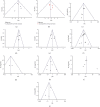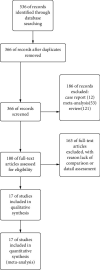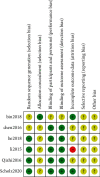Anterior Cervical Discectomy and Fusion Using Zero-P System for Treatment of Cervical Spondylosis: A Meta-Analysis
- PMID: 34956433
- PMCID: PMC8702348
- DOI: 10.1155/2021/3960553
Anterior Cervical Discectomy and Fusion Using Zero-P System for Treatment of Cervical Spondylosis: A Meta-Analysis
Abstract
Objective: The current study aimed to explore the efficacy of Zero profile intervertebral fusion system (Zero-P) and traditional anterior plate cage system (PC) in the treatment of cervical spondylotic myelopathy (CSM). Further, the present study evaluated effects of the treatments on medical security, height of intervertebral disc, adjacent-level ossification development (ALOD), and adjacent segmentation disease (ASD) through a systematic retrospective analysis.
Methods: Studies on Zero-P system and traditional anterior plate cage system for ACDF in the treatment of CSM were searched in PubMed, Web of Science, Ovid, Embase, and Cochrane Library databases. Two independent researchers screened articles, extracted data, and evaluated the quality of the articles based on the inclusion and exclusion criteria of the current study. RevMan5.3 software was used for meta-analysis following the guidelines of Cochrane collaboration network. Cervical curvature, interbody fusion rate, preoperative and postoperative disc height index (DHI), fusion cage sinking rate, postoperative dysphagia, ASD, ALOD, and loosening of screw were compared between the two groups.
Results: A total of 17 literatures were included in the present study, including 6 randomized controlled trials and 11 observational studies. The studies comprised a total of 1204 patients with CSM, including 605 patients in the Zero-P system group (Zero-P group) and 599 patients in the traditional animal plate cage group (PC group). Results of this meta-analysis showed that postoperative dysphagia [OR = 0.40, CI (0.28, 95% 0.58), P < 0.00001], ALOD [OR = 0.09, CI (0.02, 95% 0.39), P = 0.001], ASD [OR = 0.42, CI (0.20, 95% 0.86), P = 0.02], and screw loosening [OR = 0.20, CI (0.08, 95% 0.52), P = 0.0009] of the Zero-P group were significantly lower compared with the PC group. On the other hand, preoperative cervical curvature [WMD = -0.23, CI (-1.38, 95% 0.92), P = 0.69], postoperative cervical curvature [WMD = -0.38, CI (-1.77, 95% 1.01), P = 0.59], cage sinking rate [OR = 1.41, CI [0.52, 95% 3.82], P = 0.50], intervertebral fusion rate [OR = 0.76, CI (0.27, 95% 2.48), P = 0.38], preoperative DHI [WMD = -0.04, CI (-0.14, 95% 0.22), P = 0.65], and postoperative DHI [WMD = 0.06, CI (-0.22, 95% 0.34), P = 0.675] were not significantly different between the two groups.
Conclusion: It was evident that the Zero-P system used in ACDF is superior compared with the traditional anterior plate cage system in postoperative dysphagia, avoiding ALOD, ASD, and screw loosening.
Copyright © 2021 Zhaoyang Guo et al.
Conflict of interest statement
The authors declare no potential conflicts of interest.
Figures












References
Publication types
MeSH terms
LinkOut - more resources
Full Text Sources

